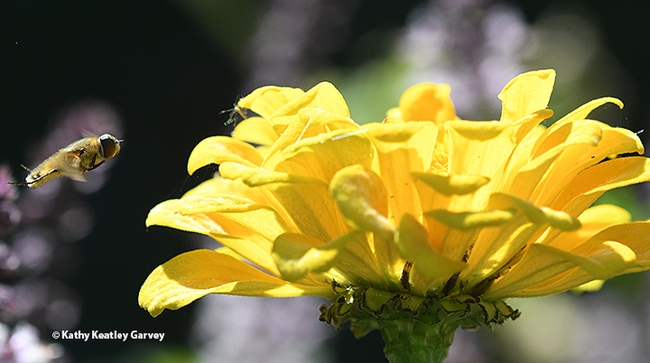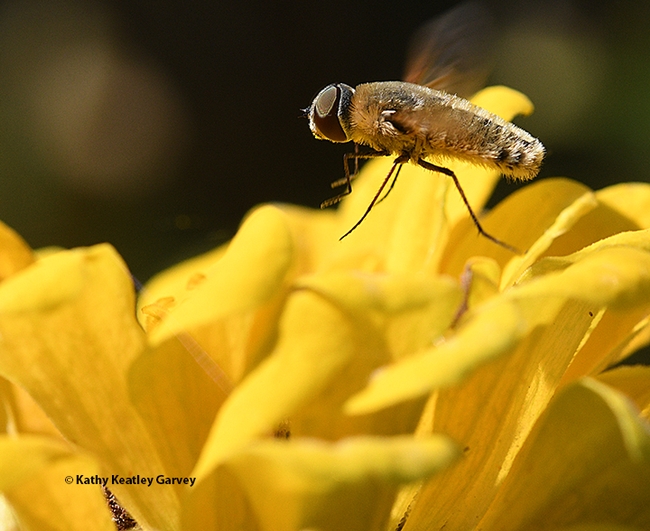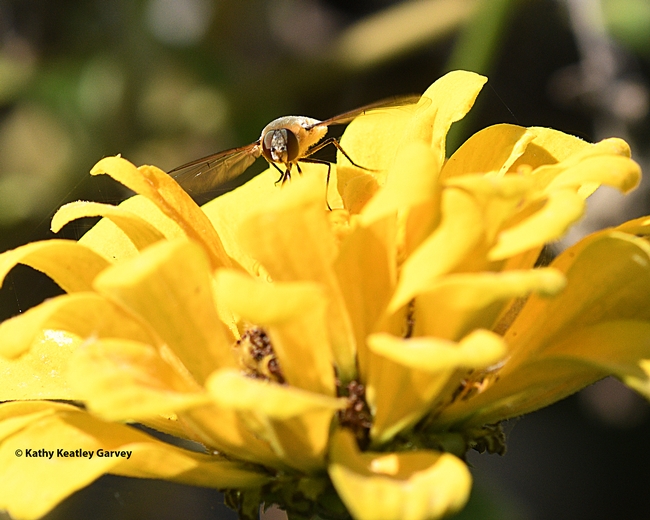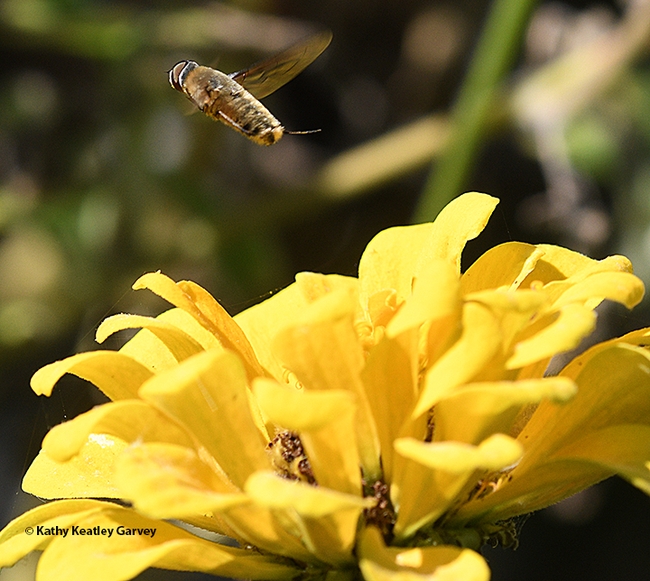The late Argentine-born biologist Beatriz Moisset (1934-2022) of Willow Grove, Pa., called the insect "A Pollinator with a Bad Reputation."
Moisset, who received her doctorate from the University of Cordoba, Argentina, and authored the book, Bee Basics, an Introduction to Our Native Bees, was referring to bee flies, from the family Bombyliidae. In their larval stage, these flies parasitize the eggs and larvae of ground-nesting bees, beetles, and wasps.
They superficially resemble bees. If you look closely, however, they have one-pair of wings (bees have two pairs), and their antennae are short and stubby, unlike that of bees.
They neither bite nor sting. Bombyliidae includes some 4500 described species, found throughout North America, Europe and Asia, with many more undescribed.
If you see these long-legged, fuzzy-looking insects, they're usually foraging on flowers or hovering above the ground.
"The reason why it diligently hovers over bare ground early in the spring is that it is looking for bee nests," Moisset wrote in a piece published on the U.S. Forest Service website. "The bees dig tunnels and lay their eggs at their bottoms after collecting enough pollen to feed the larvae. This requires numerous trips, thus the bee fly takes advantage of the mother's absence and lays its eggs in such nests. Making use of its flying prowess, it does not even need to land but it flicks its abdomen while hovering over the open burrow, letting one egg fall in or near it."
"The fly larva finds its way to the chamber where the mother bee has laid the provisions and the egg and proceeds to feed on the stored pollen," Moisset explained. "Afterwards it devours the bee larvae; when it is fully grown, it pupates and stays inside the nest until next spring."
We spotted a bee fly in a Vacaville pollinator on Sept. 19. It zoomed over a yellow zinnia, hovered, and then dropped down to sip some nectar. Meanwhile, looking like a cross between a bee and a fly, it skirted syrphid flies and honey bees also intent on getting their share of nectar.
The bee fly is aptly named.
Attached Images:

A bee fly, family Bombyliidae, heads for a yellow zinnia in a Vacaville pollinator garden. (Photo by Kathy Keatley Garvey)

The bee fly hovers over a yellow zinina. (Photo by Kathy Keatley Garvey)

The bee fly sips nectar from the zinnia. (Photo by Kathy Keatley Garvey)

The bee fly takes flight. (Photo by Kathy Keatley Garvey)